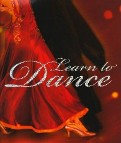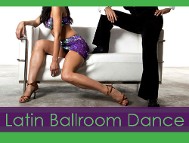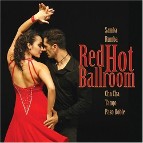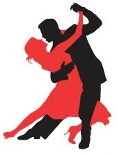Dancing With The Stars
Dancing With The Stars: 8 Great Health Benefits Of Dancing
The Huffington Post | By Laura Schocker
http://www.huffingtonpost.com/mobileweb/slideshow/1411588/219370/?icid=hp_healthy-living_gallery
http://www.huffingtonpost.com/2012/04/09/dancing-with-the-stars-health-weight-loss_n_1411588.html?icid=hp_healthy-living_gallery
Each Monday night, millions of Americans hunker down on their couches to watch their favorite celebrities break a sweat on Dancing With The Stars. And aside from offering entertainment, all those fox trots and sambas add up to some serious cardio. The proof is in the weight loss. Each season, we've seen some remarkably healthy transformations, from Kirstie Alley to Kelly Osbourne.
While the hours of intense training week after week surely have something to do with the number of pounds shed, the truth is that dancing actually has some unique benefits that can't be achieved with other types of exercise.
"Dance, in my opinion, is one of the best ways to get in shape as you're working multiple muscle groups all at the same time that in turn keeps your body constantly challenged," says fitness expert Tracey Mallett, creator of "The Booty Barre" DVD series and the new "FuseDance Cardio Lean" and "FuseDance Cardio Melt," which will be released next month. "Also, in dance-based classes we choreograph the exercises to the actual beat of the music, which I've found helps to push you a little harder."
So this week we challenge you to channel your favorite DWTS star and bust a move yourself -- even if it's just in the comfort of your own living room. For inspiration, we gathered up eight reasons why dance does a body good.
1. It's A Great Cardio Workout
Like any good low-impact cardio workout, such as running or aerobics, dancing can improve cardiovascular health, increase stamina, strengthen bones and muscles and stave off illnesses, like diabetes and heart disease. But aside from the perks associated any heart-pounding activity, dancing has a cardio edge, with unique benefits that actually can't be achieved by other low-impact exercises. "Dancing can give you more than traditional cardio," explains Fabio Comana, exercise physiologist and senior fitness education for the National Academy of Sports Medicine. Comana describes five components of fitness: cardiovascular endurance, flexibility, muscular endurance, body composition and muscular strength. An activity like, say, running on the treadmill may improve cardiovascular endurance and body composition, but an activity like dancing can actually target those two, as well as muscular endurance and flexibility. And that's on top of improved balance, agility, coordination, power, reactivity and speed, he explains. But we're not talking slow dances here -- to count as true cardio, Comana suggests aiming for an exertion level somewhere between a 5 and a 7 on a scale where 1 is resting and 10 is the hardest thing you can do. Try the talk test: you shouldn't be so out of breath that you can't speak, but your words should be a little choppy and your breath heavy.
2. It's Fun!
"If exercise is not an enjoyable experience, we're not going to do it," Comana says. And the bottom line is that dancing is, plain and simple, fun in the way a monotonous treadmill run probably never will be. Plus, busting a move can trigger the release of feel good hormones like serotonin and endorphins. "People think, 'I'm not exercising, I'm dancing,'" he says. "But at the end of the day, you're moving and you're burning calories. It's just as good as a cardio class."
And, as Mallet explains, not only will you be more likely to stick with a fitness routine if it's fun, but you'll also want to do it for longer.
"This will push you to move for a longer period of time than typical exercise, purely because it's a lot of fun and not the dreaded word 'exercise,'" she told The Huffington Post. "Dance inspires people to get in shape with something they love to do, which doesn't feel like dreaded exercise or a bad chore, but fun and exhilarating.
3. It's Social
As much as we all love to dance when there's nobody watching, there's something irresistible about dancing with other people, whether it's with a partner or a class-full of fellow booty shakers.
"Group fitness is seeing a surge in popularity because of Zumba," Comana says. And working out in a class can help to up the difficulty level and increase accountability.
4. Anyone Can Do It
"The nice thing about dance is that it's inclusive," Comana says. "Exercise is not inclusive, some people feel like they don't have the skill set and they're embarrassed ... I think anyone can just start to dance and enjoy the experience."
Nervous about dancing in front of people? Start out in your own living room, moving to a song you just can't resist.
"There is a dancer in all of us," Mallett says, "and when we move our body to the music we naturally smile and want to keep moving."
And don't let two left feet keep you from joining in on the fun.
"Don't get intimidated because you feel like you're not a good dancer. Who cares?" Mallett says. "It's about you moving your body in your way not like the rest of the people in the class. Zone out and focus on how great you feel and that no one is judging your abilities."
5. It Can Keep Your Brain Sharp
We've all heard by now that mental activities like reading and playing games can help to keep your brain sharp and even stave off dementia later in life. But, according to one study, so can dancing.
The findings, published in the New England Journal of Medicine, suggest that getting footloose on a regular basis is linked with a 76 percent reduction in dementia risk, about as much as playing board games or a musical instrument. Other physical activities, such as bicycling, walking and doing housework, weren't associated with any decreased risk.
6. It's Gentle On The Body
The wide variety of moves (anyone up for the robot?) that we bust out when boogying down can actually be a lifesaver for your body, as you're avoiding the wear and tear of repetitive motions.
"It's not so repetitive as we're constantly combining exercises together in different combinations and developing fun innovative moves that you typically would not find in low impact cardio aerobic classes," Mallett says.
Unlike more traditional cardio, which is very structured and vigorous, dancing is more free flowing, allowing you to adjust the tempo when your body needs a break, Comana explains. "What I like about dance is dance is free flowing," he says. "It's less traumatic on the body ... You don't have to worry about going hard, you can always slow down."
7. It Can Improve Your Balance
Each year, one out of every three adults over the age of 65 will fall, according to the CDC. One thing that could help? Strapping on your dancing shoes.
A recent research review found that dancing, as well as carrying objects while walking, can help to improve balance and ultimately reduce dangerous falls, the Huffington Post reported when the findings were first released.
"It is well worth the elderly putting their favorite music on at home and having a little jig," study researcher Tracey Howe, of Glasgow Caledonian University, told The Telegraph.
8. You Don't Need Any Equipment
Interested in starting up a dance-based fitness routine? You really don't need a thing to get started.
"The easiest solution is to put on your favorite music and move your body in your living room, which alone will burn lots of calories," Mallett says. "For a more structured workout buy an exercise dance DVD."
So go ahead, dance like there's nobody watching. It's for your health.











